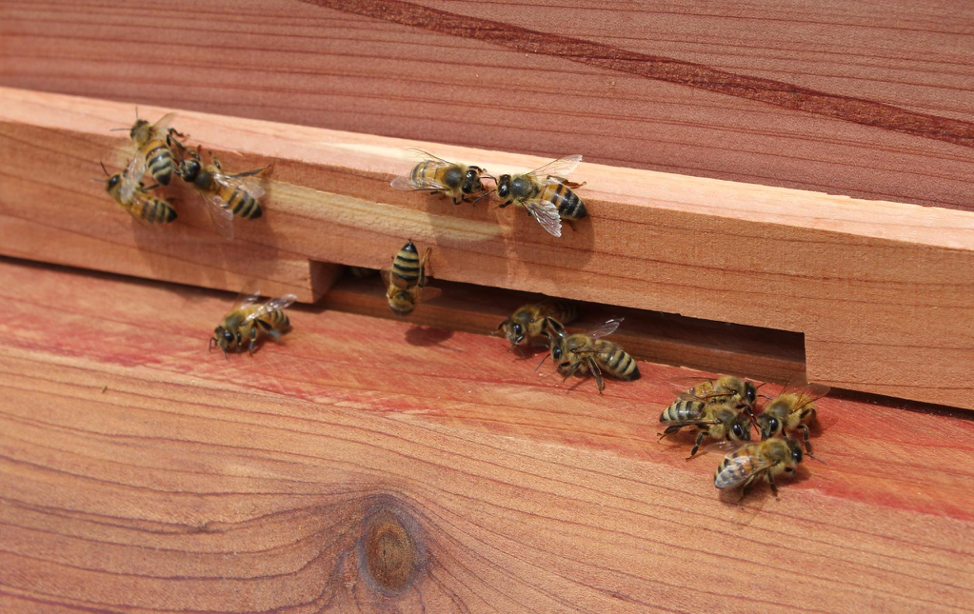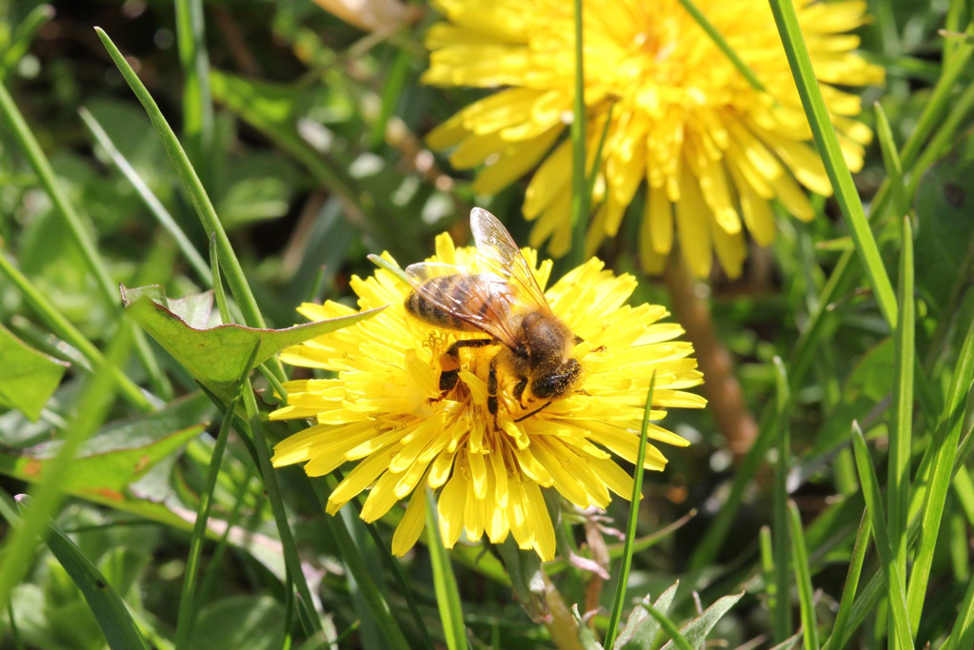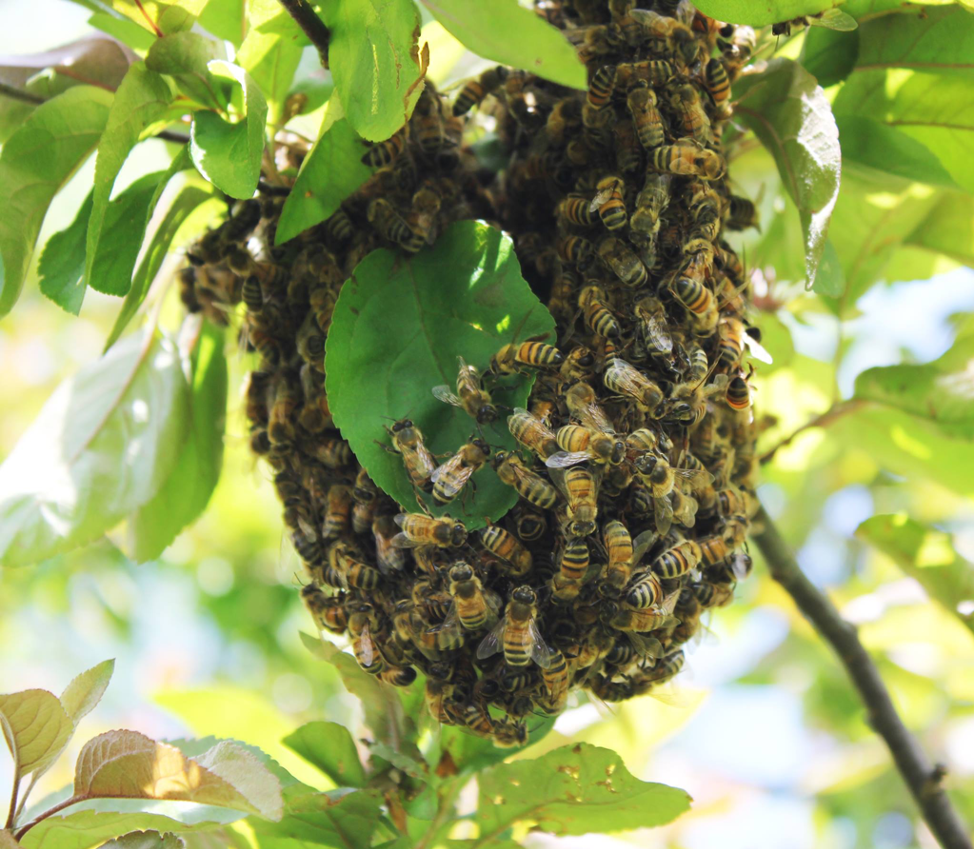Bugs from our Research Collection
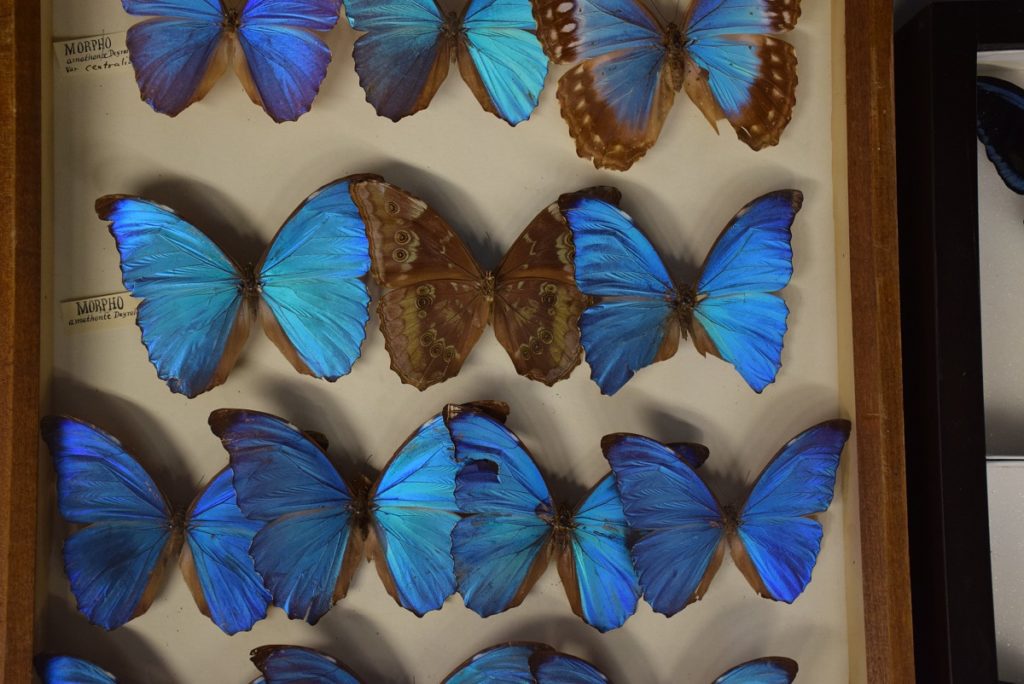
This is a specimen drawer of Blue Morpho butterflies from our Section of Invertebrate Zoology! This species is well known for its sexual dimorphism, which means that males and females of this species look physically different. The males of Blue Morpho butterflies are the bright blue specimens in the drawer above, and the darker brown specimen above is the female.
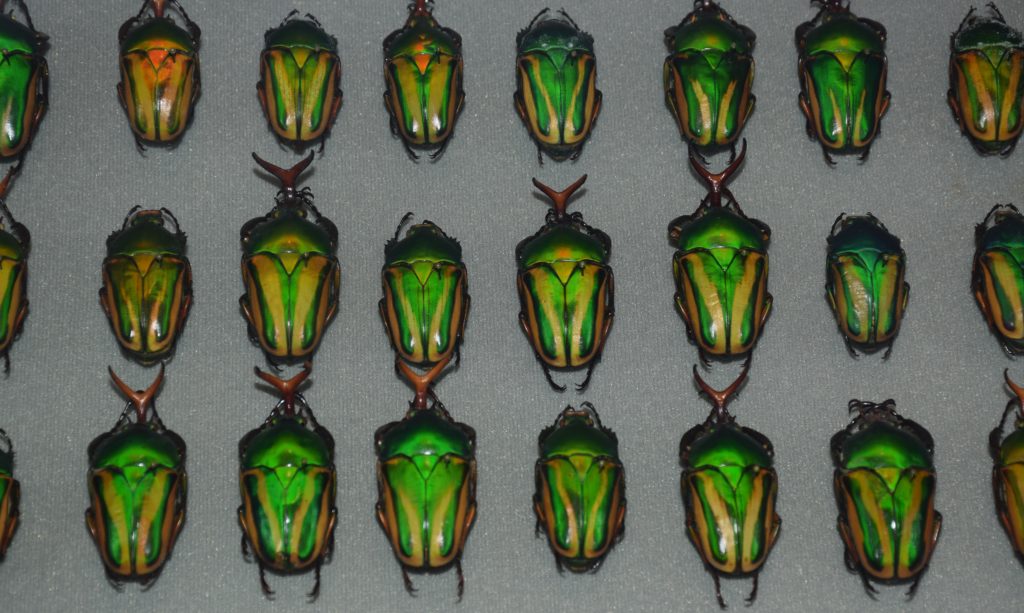
This species of scarab, Eudicella gralli, which is sometimes referred to as the “Flamboyant Flower Beetle,” is on display at the museum. These scarab beetles are also sexually dimorphic, or males and females look physically different. The male scarabs in the picture above have large, Y-shaped horns that they mainly use to fight for females, while the females (look closely at the bottom right beetle) have shorter, shovel-like tusks great for digging and burrowing.
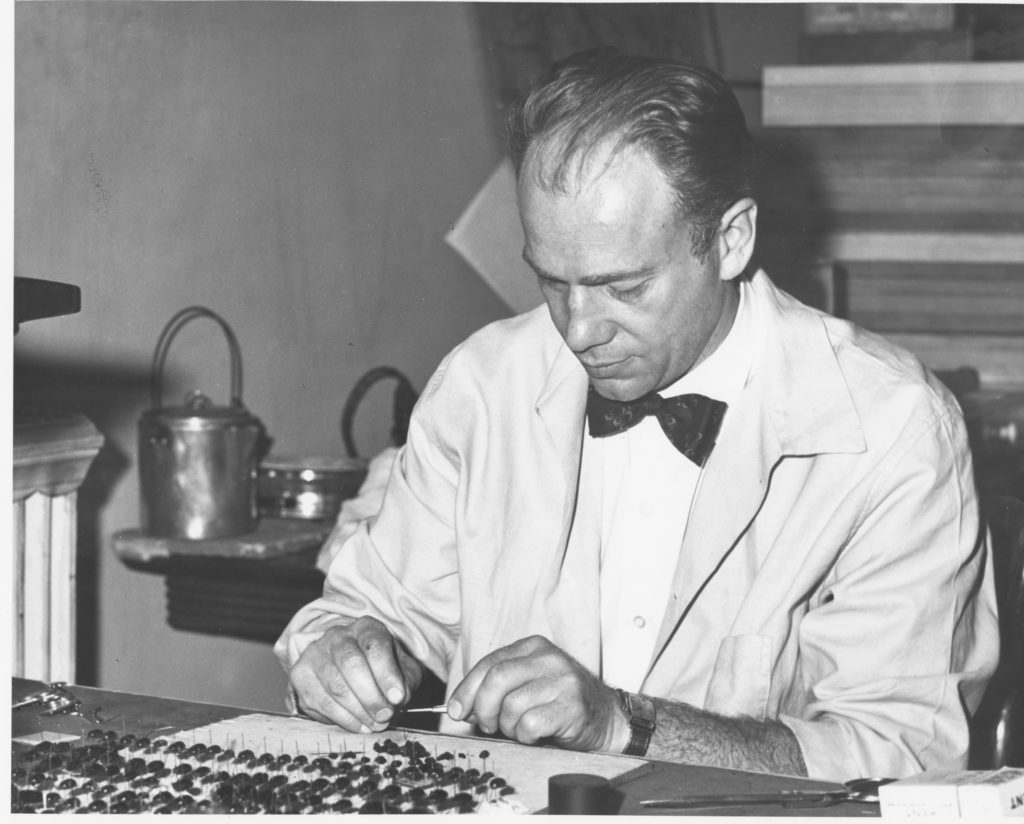
John Bauer (pictured above) was an entomologist at Carnegie Museum of Natural History for 43 years in the mid 1900s. He is pictured preparing beetle specimens, like the kind you see on display at the museum. Behind the scenes, our scientists continue to do incredible research with the hundreds of thousands more specimens they have collected and prepared since this photo was taken. Learn about some amazing ways our scientists help to share our collection with other scientists.
Bugs at Powdermill Nature Reserve
All of the photographs of the insects below were taken at Powdermill Nature Reserve, the museum’s environmental research center.
Life Stages of the Baltimore Checkerspot Butterfly
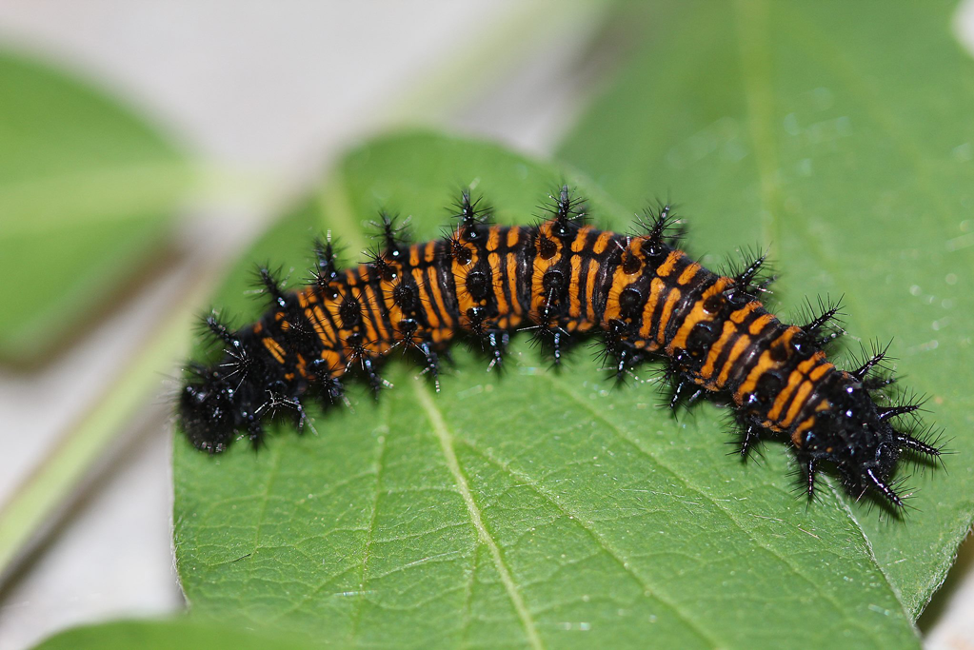
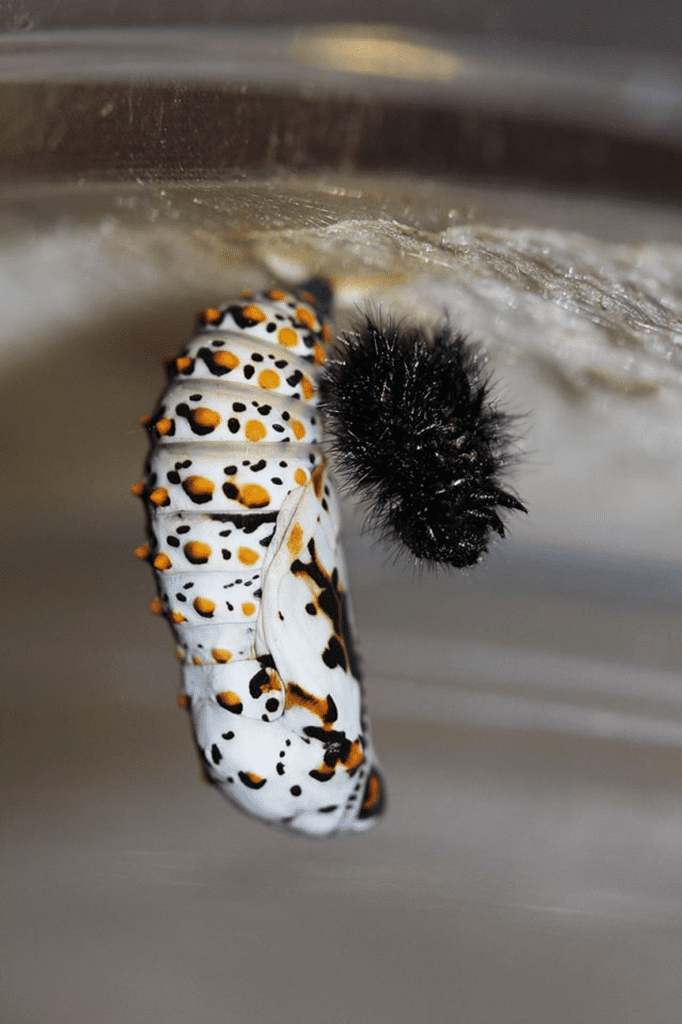
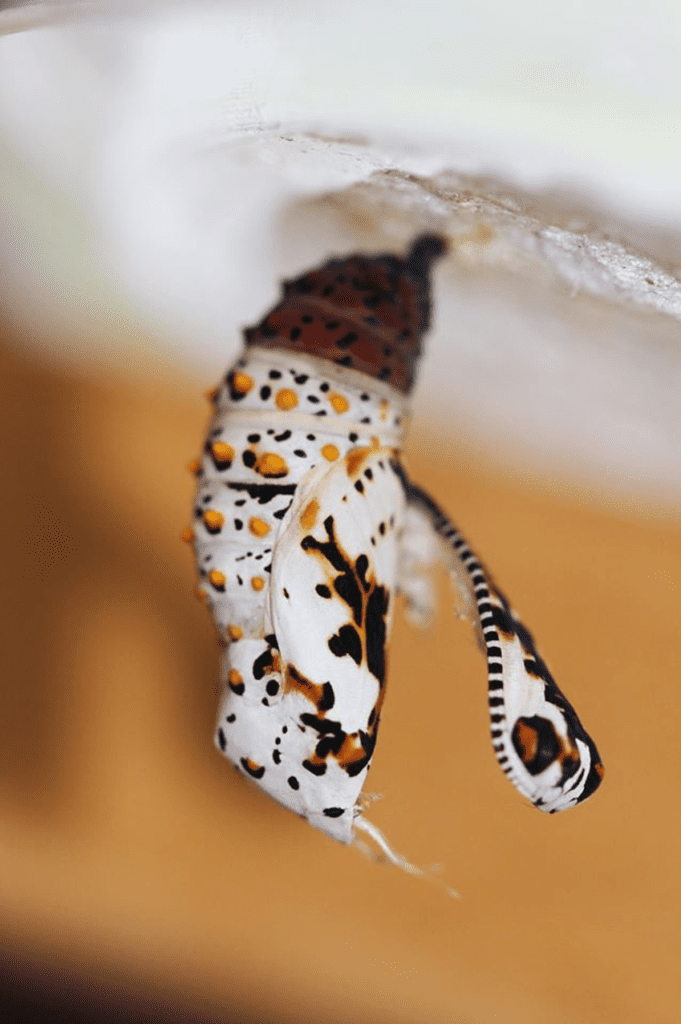
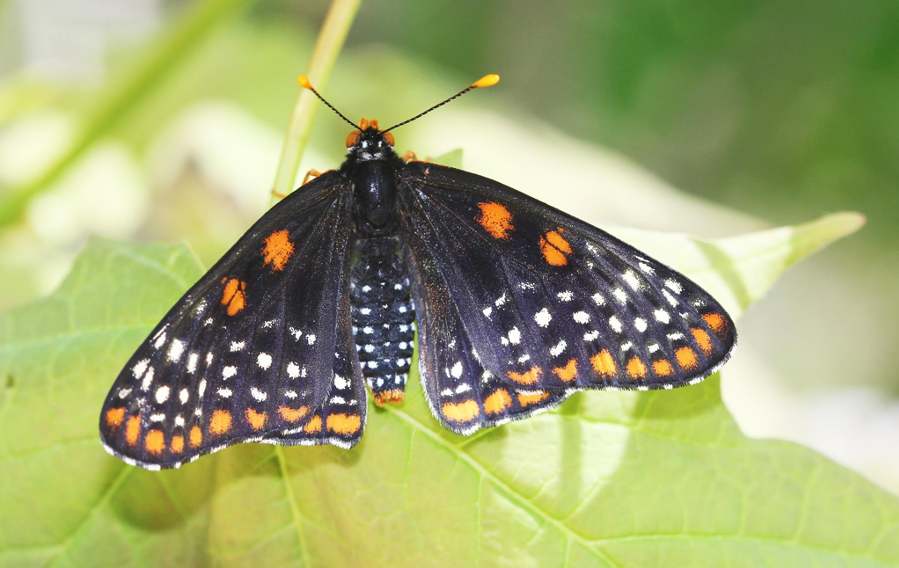
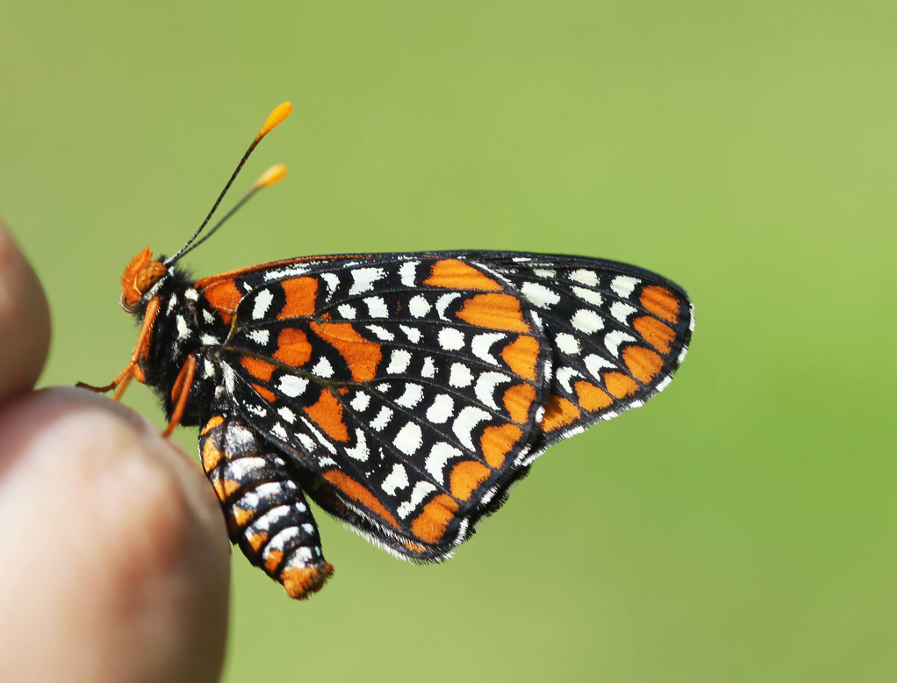
Eastern Tiger Swallowtail
The adults of this species of butterfly feed on nectar from flowers. This species is dimorphic, meaning males and females look different, with females being either black or yellow. A yellow female will look similar to a male, other than having blue spots on her hindwing. Do you think the butterflies shown here are male or female?
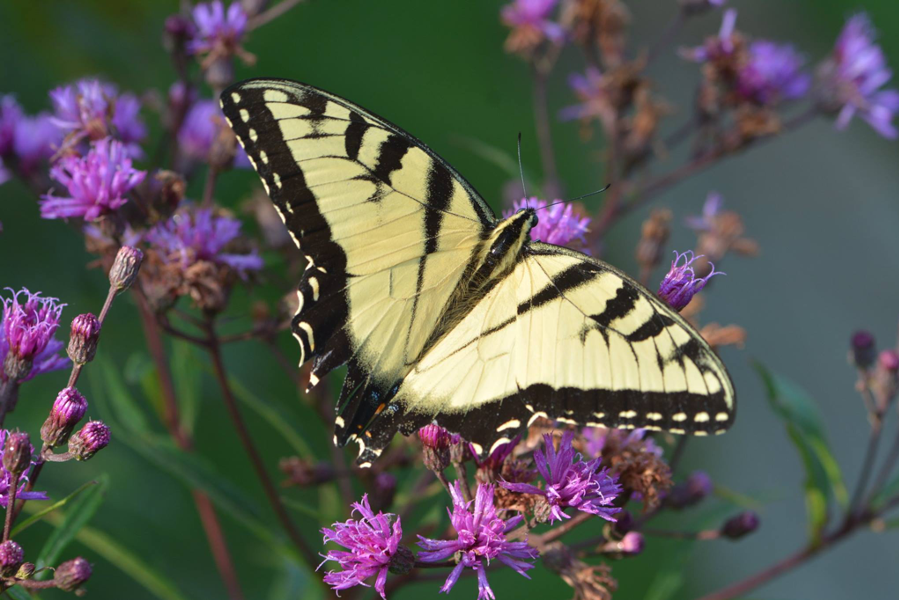
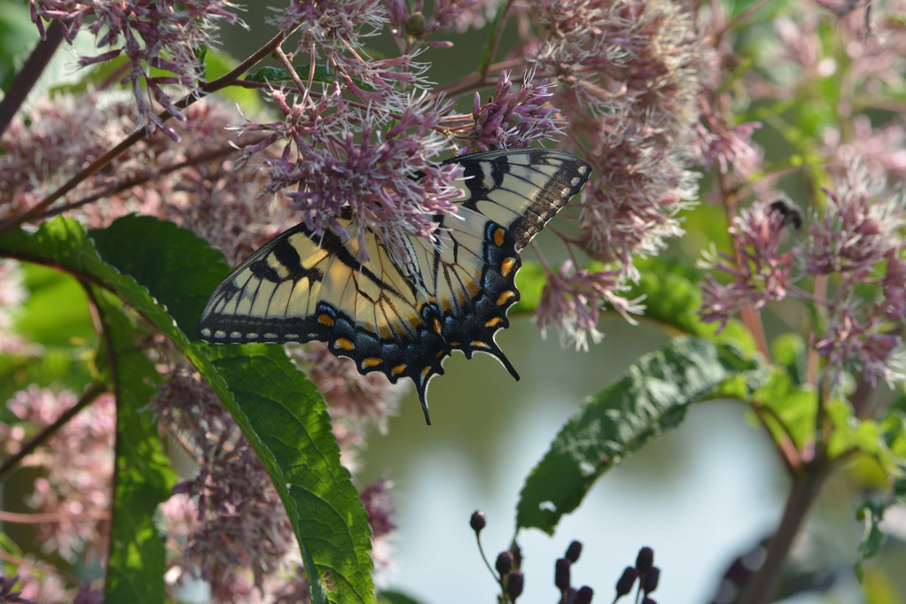
Honey Bees
Honey Bees harvest nectar and pollen from flowering plants. They are social insects that live in large colonies. Female worker bees will fly around and gather pollen and nectar to take back to the hive, while male drones stay in the hive with the queen, who is in charge of the hive and lays all the eggs. You may see a swarm like the one shown here. If you do, please remember that it’s best to leave them alone: they are protecting their queen, and looking for a home. If the swarm is somewhere that is dangerous or inconvenient, try calling a local beekeeper to remove it safely!
